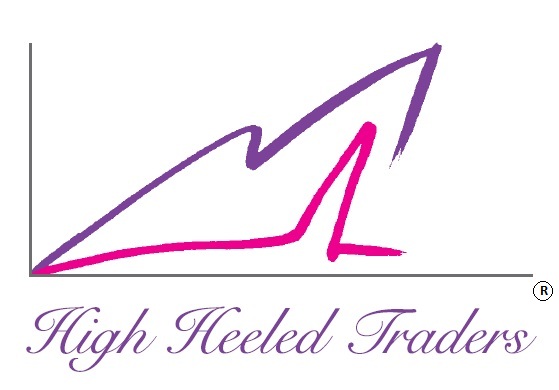If you’re looking for the hot strategy, fool-proof indicators and magical entry technique, it’s not in this fairytale! 😛 To trade, I just use easy and effective Technical Analysis. I told you my 5yr old son can trace the charts and that’s the heart of it.
Technical Analysis is based on price. Some traders say they use Technical Analysis to trade. They interpret the price information in charts and past data that form patterns or indicators and all that kind of stuff. They say what happened in the past will dictate what will happen in the future. OK let’s just say, there is some possibility. That’s why I use some simple technical analysis. If you’ve been observing the market though, whatever happens, happens. There are events that happen one day, prices fall, there was bad economic news or debt issues, prices rise because more bailout is on the way. Can’t explain it in absolute terms, nobody can, (even Dr. Nouriel Roubini who predicted the Subprime Crisis was 2 years early… ), anyway, for me there is no need to torture brain cells on understanding oscillators, stochastics and “greeks” for Options.
This section details what I use in finding the opportunity in the Trading process that we will get into later.
_________________________________________
What’s the Price?
There are different kinds of Prices. Just like in Shopping, prices change. Something like when High prices are set for vegetables that are very fresh, or low prices when a Sale starts (Opens), then as the season progress, they mark it down further with a different Close price. So you would see Prices quoted at Open, Close, High and Low.
For example, traders pay attention to these interpreting as follows:
- If Open price is higher than yesterday’s Close, there is a trend UP
- If Open price is lower than yesteday’s Close, there is a trend DOWN
The succession of prices is seen together as a trend and show the direction of the market. Over time, the trends shown could go Up, Down, or Sideways. Note that your trading timeframe will limit showing the trend, like 1 week down-trend could actually be a part of a 6month Uptrend. So you have to look at different timeframes to be able to see the main trend.
Different Trading concepts look at Trends to see where a profit can be made. We will discuss that later.
What are you looking at?
Price is represented in different ways as well,
- bar charts that is basically an upright stick where they put little “marks” to indicate High, Low etc
- candlesticks – shown as hollow or filled up depending on price went down or up
- line graph – this plots the closing price over time
Guess which one I use? The simplest one – the line graph. My trading strategy just use the closing price and medium timeframe. I do look at high and lows but these get shown in price table so if I want to check in detail, I look there. The line chart clearly shows the trend, key highs and lows that I use to spot an opportunity and measure risk.
Example : Line chart showing High and Low
__________________________________________________
What to look for
Look for opportunity based on the price history. There are 2 price points that could be used to place price in context and where the opportunity could be. These are the High (Resistance) and Low (Support) levels of the price chart.
VOLUME which is the number of people who have placed orders to buy or sell, usually drive the price moves. So look at that too when looking at prices. If few buyers exist and are pushing up the price, it is usually not sustainable. If there are more sellers than buyers that is also indicating something, what do you think? This is the same as if you are in a weekend market and constantly being offered something at a price and you don’t do the deal, you can expect the seller to offer you a lower price right? That usually happens in the financial markets too!
| Price points | What can happen | What makes prices move ? |
| Support – lower limits of the current price. In the example above it is 13.80 level | If the current price is close to Support and breaches it, the price can move lower | High volume of sellers drive down price past Support |
| Resistance – higher limits of the current price. Example 14.98 level | If the current price is close to Resistance and breaches it, the price can move lower | High volume of buyers drive up price past Resistance |
Your opportunity will be dictated by the Trading Concept, we will pick up on this on the Trading Process.
VOLATILITY
You would notice the price move up and down or is “volatile” . I’ve come to discover that this is a normal feature of the market. You can’t expect for prices to move in one direction all the time because different people trade in the markets for different reasons, some are value buyers, some are trying to protect their holdings or hedge another asset , have different timeframes etc. Like I can go to the weekend vegetable market and buy a kilo of apples, as I was in a hurry I didn’t try to haggle, the seller gives it to me for $4, then the next buyer comes and want to buy the whole of what’s left say, 5 kilos, then will ask for a discount. The seller is happy to finish up so can take off $2 from the total price and goes home. Meantime, the neighboring seller notice he’s got no more competition, so he jacks up the price. (Isn’t shopping fun?!) Ok, so prices go up and down, it’s to be expected.
To know how “volatile”, how much a stock moves in a day, get the High price and subtract the Low price e.g. 80cents minus 50cents, the move for the whole day is 30cents, even though it just closed from the previous day’s closing price by 10cents for example. During the day, it went up and down and up and down. Fine.
It’s how big the change that you watch out for. I kind of have my Low-Mid-High classification of volatility based on what I am trading. For example, a share worth $ 14 moves 20 cents that’s low, 30 cents is mid-level, if the move is 50cents that a high volatility. All this is intuitive. I suggest you observe this every day with stock you are watching. (You can do some mathematical computations of “moving averages” if you want). If the volatility is high, I adjust my risk, change strategy or not trade if the market is too choppy. It’s like going on the open seas, you need a stable, big boat to ride the wild waves. ;p Let’s say, as beginners we are just little boats so we’d wait out the rough seas. It’s important to know that you don’t have to be at the market all the time — if it’s not going to be profitable because of the wild swings and your system only works with trends, if you don’t have skills to handle it.
There is a volatility indicator called the VIX which is a symbol for the Chicago Board Options Volatility Index and is known as a “fear gauge”. Traders look at this to measure the (US) market’s expectation of direction (which also affects local markets). I am studying this now to see how it can improve my trading.
http://www.cboe.com/data/volatilityindexes/volatilityindexes.aspx
BREAKOUT
I am sure during teenage years you’ve had bouts of “breakouts” on your skin. This nasty surprise would normally follow with more nasty surprises, after a (frustrating) period of time, it will begin to subside.
Breakouts also happen to be useful in Trading. I told you about Volatility, at certain times, the volatility would be low, just bouncing around there, nothing is happening, this is called a consolidation. Then, a move up from the range materialize, and so you get a breakout! The move could continue in the direction of the price that broke free of the consolidation. It could be another opportunity to trade so watch it along with volume.
CHART PATTERNS
You might have heard of head and shoulder patterns, flags or in the candlestick charting some cute names like doji and hammer.
Again this is popular with traders who believe what had happened before is a good basis for the future. I tried to study these before, don’t think I didn’t try hard. It drove me nuts. I found they are confusing, like when does the head start to form? I look at 6months chart and I don’t see anything, they all look weird! When do patterns start? Besides, the past is not a guarantee to profits.
In the Advanced Workshops I’ve attended at Van Tharp Institute, we don’t study patterns for prediction (we don’t predict!). What is emphasized is looking at charts to measure risk and potential opportunity.
There’s no confusion there. KEEP THINGS CLEAR.











